Articles & Features
The Unusual Gallery: Discovering Art in the Strangest Places
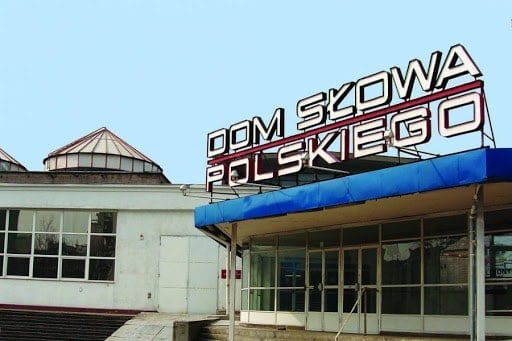
By: Tori Campbell
The Unusual Gallery
Sometimes the most unusual buildings or venues make the most intriguing gallery spaces, creating compelling and creative spaces every bit as interesting as the works they host. These strange galleries prove that art doesn’t always have to be displayed in classical edifices, monumental contemporary buildings, designed by famous architects, or in sterile and stark white cubes. From public toilets and crypts, to churches and police stations, explore some of the most unconventional art galleries in the world.
The Bower Public Toilet

Bower: noun.
https://thebower.org.uk
i. A pleasant shady place under trees.
ii. A woman’s private room.
iii. An attractive dwelling or retreat.
Riffing off of the numerous meanings of the word ‘bower’, the former public toilet block in Brunswick Park, Camberwell, United Kingdom is now a haven for feminist art and writing. Based out of both the former women’s restroom, as well as the old park-keepers hut (now a cafe), The Bower hosts events and exhibitions of female artists and writers focusing on feminist issues and relevant socio-political themes. The space is one of London’s smallest art galleries, at only fifteen square meters, though it has also been known to expand the exhibitions out into the surrounding park with installations, projections, and sculptures.
Art on Track

Chicago’s ‘Art on Track’ was created in 2008 by a group of students at the School of the Art Institute of Chicago to provide opportunities to enjoy public art. Benefitting art lovers and artists alike, metro cars are provided to curated artists for free, allowing them creative license to implement their ideas and affect a wide audience. Since 2008 Art on Track has become the world’s largest mobile art gallery, taking place over the course of six cars on a moving Chicago Transit Authority metro train.
The Crypt Gallery
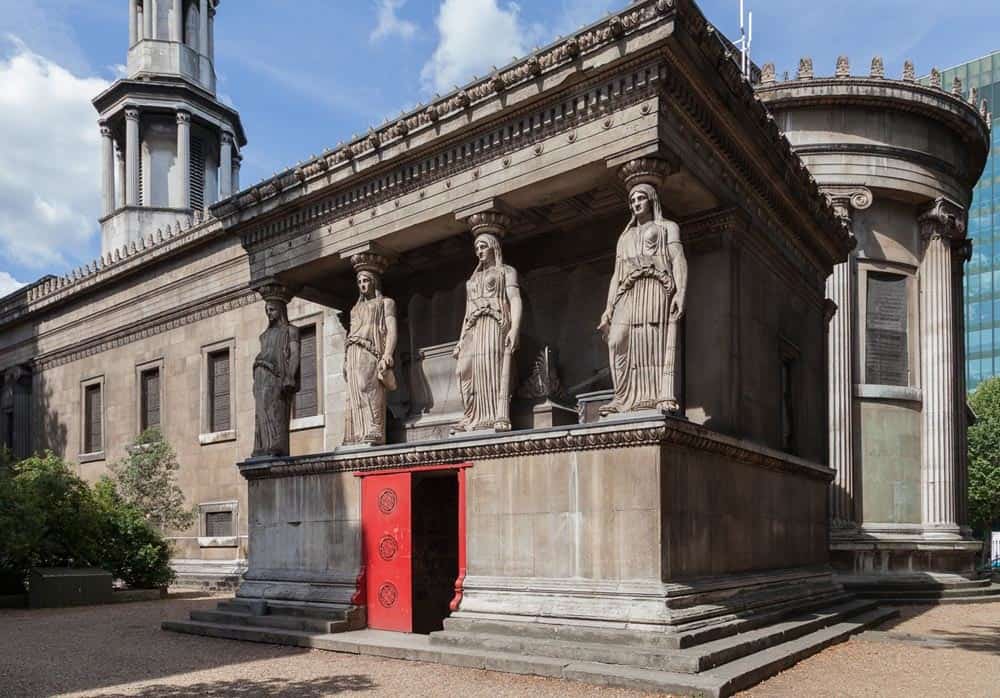
The Crypt Gallery in London has had many lives and has experienced numerous iterations. First established in 1822 as the Crypt of St. Pancras Parish Church the space was used for burials until a discontinuation order in May of 1855. Later on, the Crypt was used as an air raid shelter during both World Wars. However, it wasn’t until 2002 when the space became an unusual gallery for contemporary 21st century artists to exhibit their work. Still the final resting place of 557 people, The Crypt Gallery prides itself on its contemplative environment, hosting art that provokes, questions, and calms.
König Gallery Berlin

“There are not many examples of Brutalism in Germany, and this one is iconic. It is viewed as a very important building here…But it was in terrible condition both inside and out, because despite the way it looks, its surfaces are very sensitive to the environment.”
Johann König
Built in 1967 by Werner Düttmann, German architect and the former director of urban development for West Berlin, the St. Agnes Church was a once reviled piece of Brutalist architecture. The church was purchased in 2011 by prominent art dealer Johann König — a man intimately familiar with unusual artistic venues, as his London car park art gallery proves. Determined to revive the heritage-listed space as a cultural hub and gallery, König spent a great deal of time and money with the help of architect Arno Brandlhuber, to give the space a new lease on life. The newfound gallery is now bathed in natural light, with the church being home not only to the eponymous gallery business, but also to a restaurant, several apartments (including one for König and his family), temporary artist residences, and several commercial tenants.
The Old Police Station

London seems to be a city that is no stranger to unusual gallery spaces, and this might just be one of the most bizarre. Simply known as ‘the Old Police Station’ the former Deptford precinct is now host to a do-it-yourself gallery for up and coming artists. The space is devoted to both exhibiting and creating art, allowing rising stars of the British art world a place to intimately exhibit. Utilising both the office space as well as the original tiled cells (complete with built-in latrines) for exhibitions; the courtyard is packed full of shipping containers that house artist studios, making the Old Police Station in Deptford a one-stop-shop for artistic exploration.
Sammlung Boros
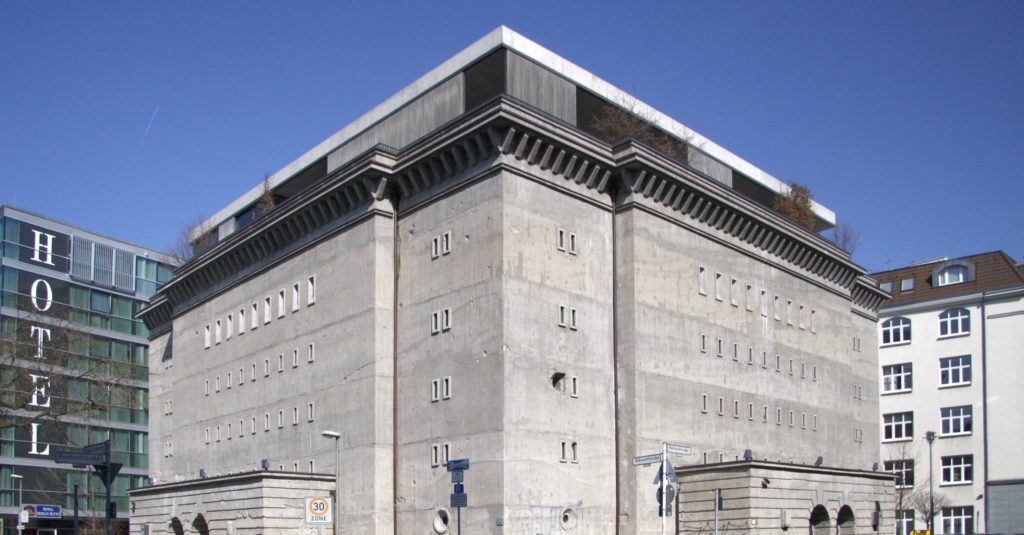
Also in Berlin is Sammlung Boros, a massive private collection gallery owned by Christian Boros, the German media entrepreneur and avid art collector. The space, open strictly by appointment only, exhibits contemporary art by international artists from 1990 to the present day over 3000 square metres. Built in 1943 by the Nazi regime, the Boros Bunker was created as a bomb shelter, with two-metre thick walls and hulking presence. After the fall of Nazi Germany and Berlin in 1945 to the Russian Red Army, the space was used as a prisoner of war camp, and then later as textile and tropical fruit storage. In the 1990s it became an iconic Berlin nightclub, the site of debaucherous counterculture until a crackdown in 1996 that left the site empty. The Sammlung Boros opened in 2008 and is still open to lucky visitors today that plan and book a tour ahead of time.
Dom Słowa Polskiego Printing House
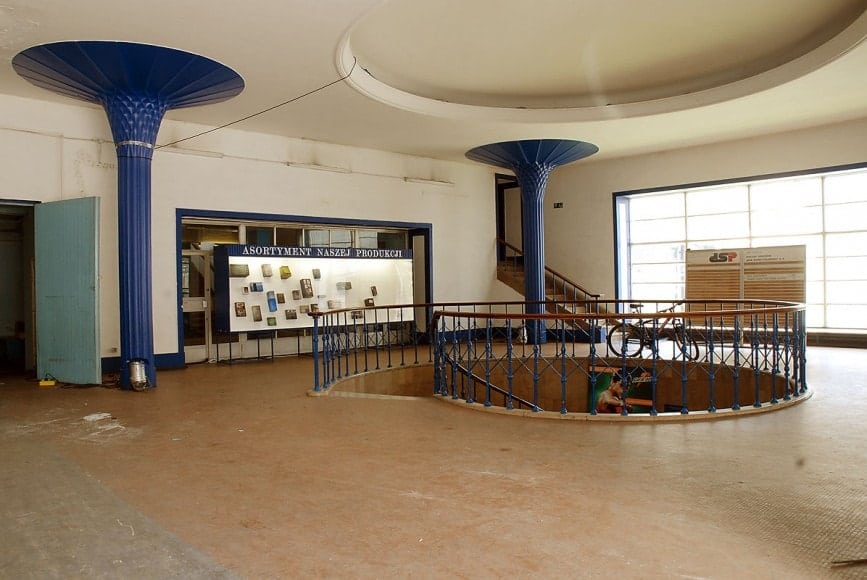
Dom Słowa Polskiego, directly translated to ‘House of the Polish Word’ was once the largest printing company in the country. Established in 1948 over five hectares in Warsaw, Poland the space was the largest printer throughout the communist Eastern bloc. Throughout the 1970s the printing facility was producing approximately 27 million books, 510 million newspapers, and 195 magazines per year. By 2007 the state run printer was privatised and became a joint-stock company that no longer played a significant role in the market. The massive space is now abandoned, serving multiple cultural purposes, serving as an art gallery, electronic music venue, and pop-up workshops.
Cisternerne
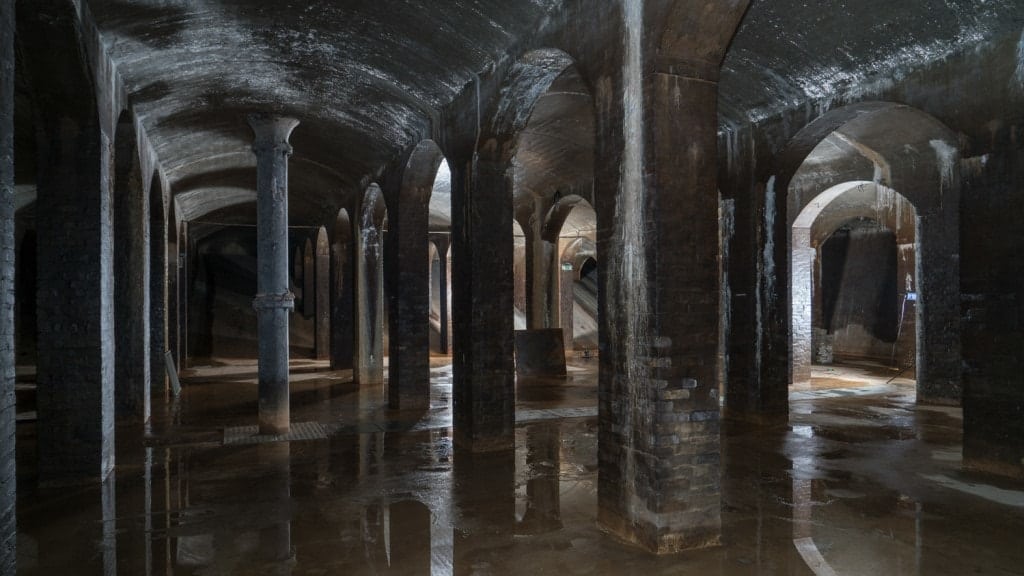
Built from 1856-1859, the subterranean water reservoir on Denmark’s Frederiksberg Hill, located 31 metres above sea level (significantly higher than any other place in the capital) served to drastically improve the municipal water of the Copenhagen area. Originally open to the air in front of Frederiksberg Castle, the reservoir was closed in 1891 to mitigate health risks and contamination. By 1933 the Cisternerne ceased to function as a water reserve and was steadily forgotten. However, by 2001 the space opened to host The Museum of Modern Glass Art. Now, the monumental hall is home to installations and immersive contemporary art exhibitions year-round.
Feuerle Collection

“It is difficult to think of places more charged with atmosphere than these monumental concrete structures…This has been a slow, considered process – a series of subtle refinements and interventions that intensify the quality of the space, so that all the attention focuses on the art.”
John Pawson
Joining the Sammlung Boros as a private collection held in a monumental Berlin bunker, the Feuerle Collection is yet another unusual gallery space. Created by architectural designer John Pawson who is noted for his monastic restraint, the stark and minimalistic style of the space pays homage to its roots, and is in direct contrast to the Imperial Chinese furniture and ancient Southeast Asian art exhibited by collection owner Désiré Feurele. The renovation of the space was done with this juxtaposition in mind, a reference to the history of the bunker while simultaneously highlighting the noteworthy collection.
Relevant sources to learn more
Learn more about the revitalisation of the St. Agnes Church
Enjoy some more typical art spaces with our piece on contemporary museum architecture